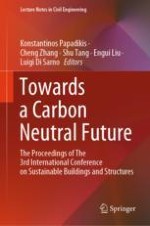2024 | OriginalPaper | Chapter
Energy Efficiency Optimization of Different Curved Building Integrated Photovoltaic (BIPV) Façades by a Parametric Shape Design Method: A Cross-Region Study
Authors : Shaohang Shi, Yehao Song, Weizhi Gao, Yingnan Chu
Published in: Towards a Carbon Neutral Future
Publisher: Springer Nature Singapore
Activate our intelligent search to find suitable subject content or patents.
Select sections of text to find matching patents with Artificial Intelligence. powered by
Select sections of text to find additional relevant content using AI-assisted search. powered by
